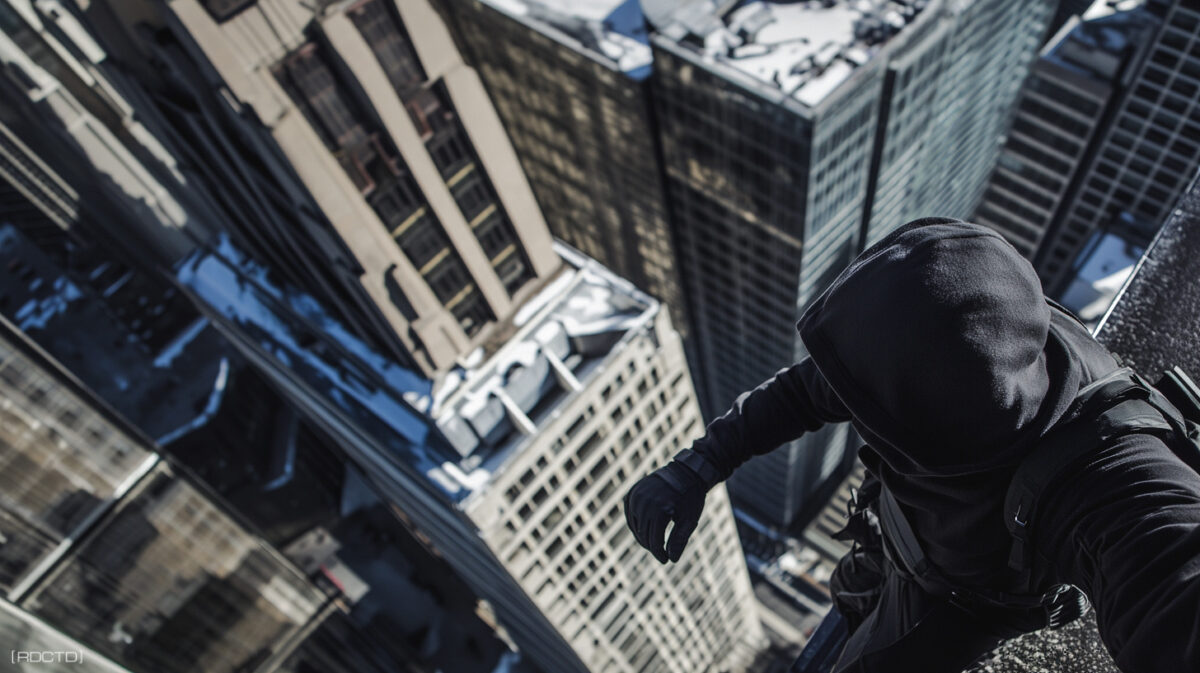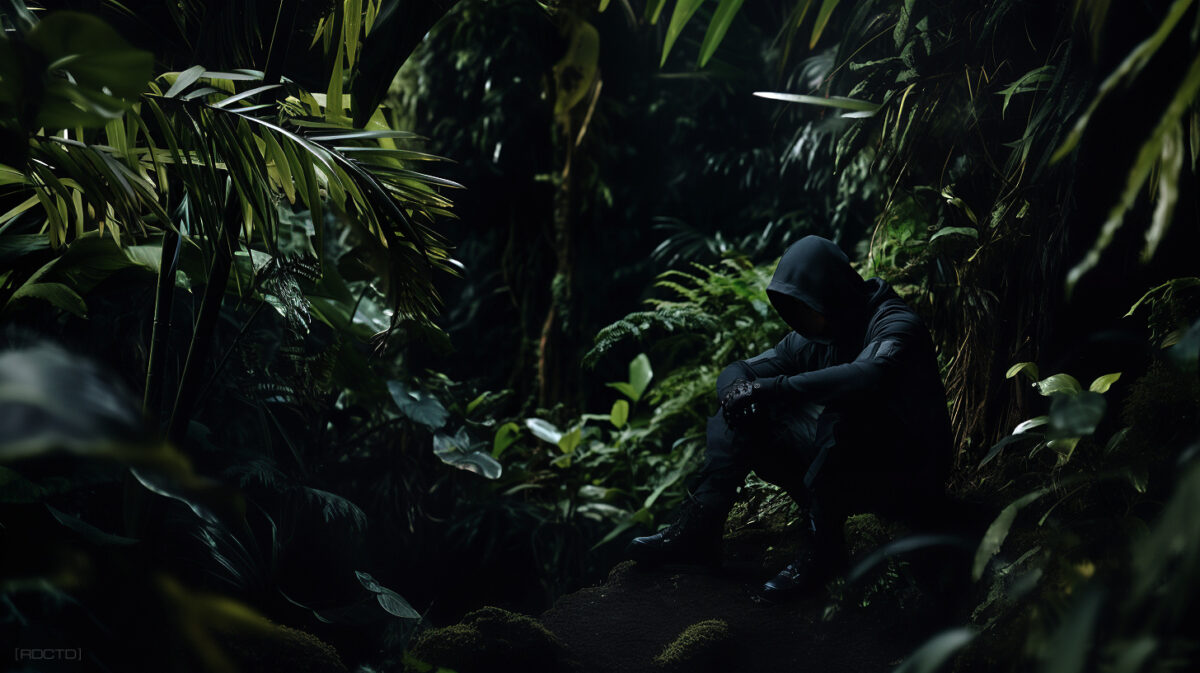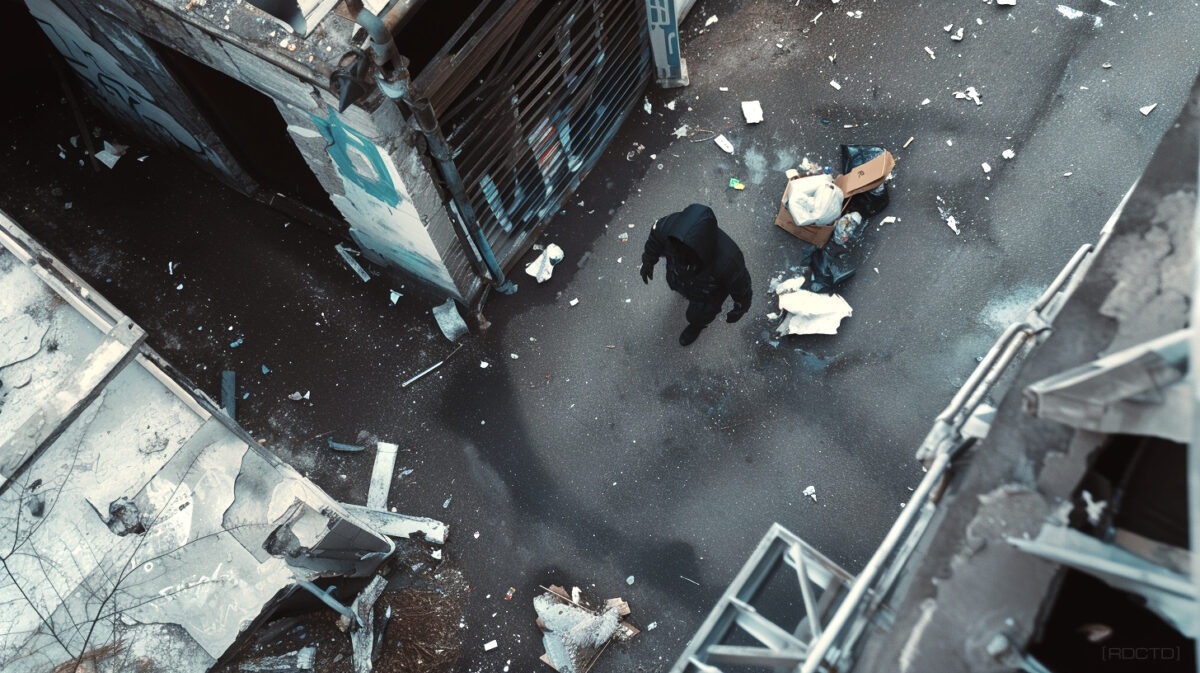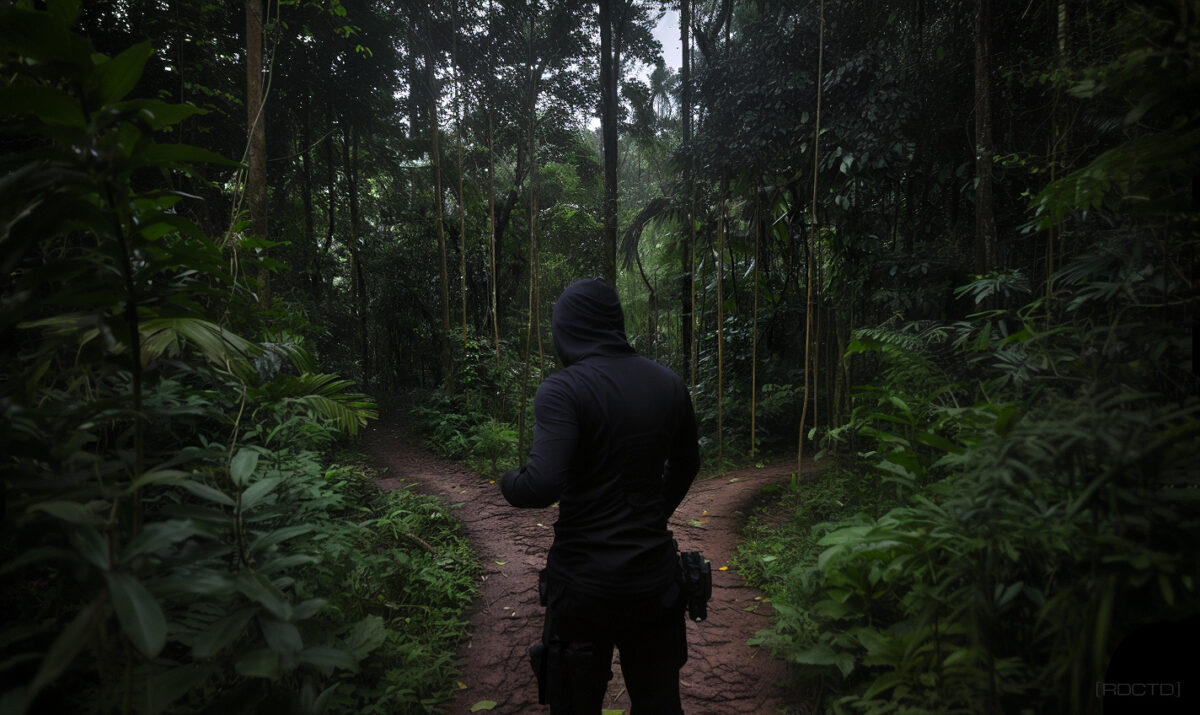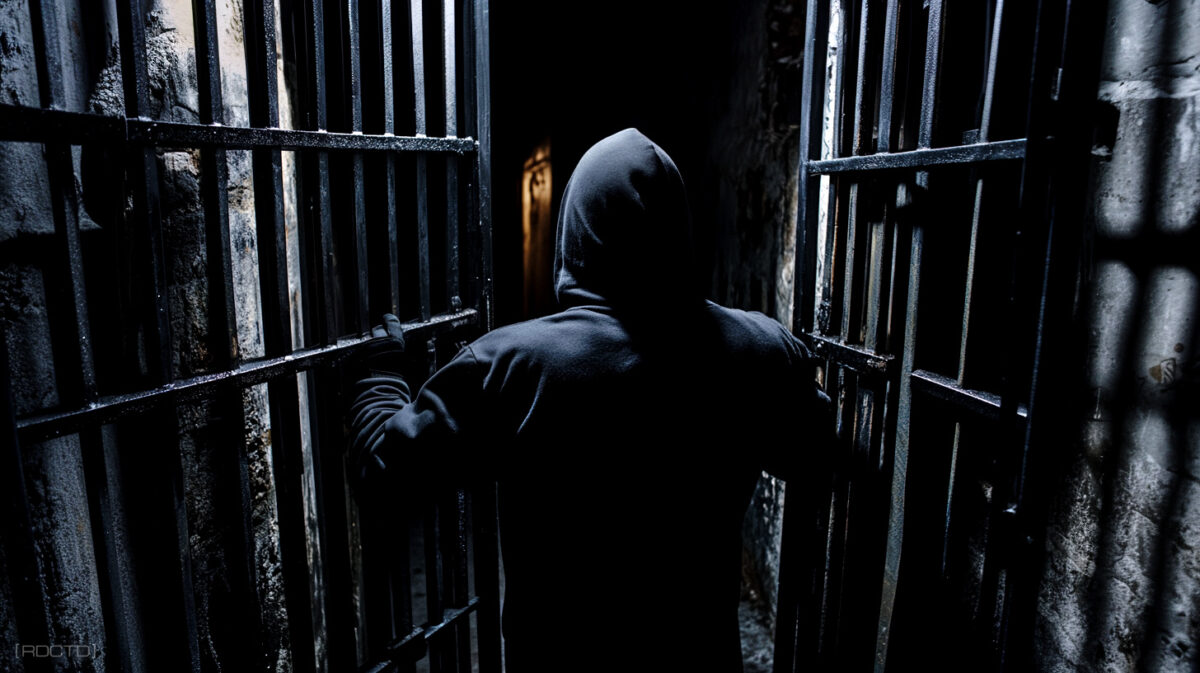A skilled tracker hunts your intent, not your steps. Kill or manipulate that intent – replace it with doubt, confusion, and false leads until the trail is no longer worth following.
It’s an essential tradecraft skillset for covert operatives working behind lines, operating in denied areas, or moving through hostile territory. The purpose is to prevent your movements from being detected, anticipated, or understood – to be untrackable. This includes misdirecting human trackers, surveillance teams, or technological means like drones, cameras, or pattern analysis tools.
Counter-tracking demands a deep understanding of how trackers think, move, and interpret both the environment and your behavior. This skillset doesn’t rely on something as basic as speed or gaining distance – it relies on control, deception, perception, and terrain manipulation.
Movement without pattern is more powerful than speed. It denies the enemy rhythm, and rhythm is how they find you.
[URBAN TRACKING]
![]()
In city environments, counter-tracking is a chess game played in real-time. Success depends on your ability to detect surveillance early, break patterns before they form, and weaponize the terrain around you.
Unlike natural environments, cities are filled with observation points, limited exit routes, and a dense human landscape that can either expose you or help you disappear. An operative needs to actively read the flow of the city, identify vulnerabilities in their own movements, and exploit every variable. Everything from reflective surfaces to crowded intersections.
Every block is a battlefield of pathways, sightlines, rhythms, potential cover, and blind spots. Knowing how to strategically move through that chaos without leaving a trace is what separates evasion from exposure.
![]()
Surveillance Awareness:
![]()
Pattern Disruption:
![]()
Use of Terrain:
![]()
Surveillance Detection Routes (SDR):
![]()
Misdirection and Disengagement:
![]()
Effective urban counter-tracking turns the city itself into a tool to take advantage of. Every street corner, every stairwell, every interaction, and every crowd becomes a piece of cover or a chance to mislead.
The operative who understands how to fade into the architecture of movement (without leaving a readable pattern) is the one who controls the engagement. You don’t outrun a tail in the city; you out-think them.
If escape is physics, counter-tracking is psychology.
[JUNGLE TRACKING]
![]()
In any wilderness environment, counter-tracking becomes a battle against the terrain itself and the trained eyes of experienced human trackers.
Unlike the urban setting, the threat here isn’t cameras or fixed surveillance – it’s the physical evidence you leave behind. Every step, broken branch, and displaced rock can betray your presence and direction.
Tracking humans in the jungle is a particularly refined skill, and so is defeating it. Here, your focus must shift almost entirely to ‘sign discipline’ – controlling what you leave / alter behind and shaping what your pursuer sees.
![]()
Sign Discipline:
![]()
Trail Disruption:
![]()
False Sign and Deception:
![]()
Noise and Odor Control:
![]()
Movement Discipline:
![]()
The jungle is both enemy and ally, it’s up to you. While it offers immense concealment, it also “records” every careless movement in detail like bio-surveillance. To beat a trained tracker in this terrain, you must think in layers; covering your visual, olfactory, and auditory signature all at once.
Counter-tracking here is about vanishing into the living terrain, moving as if you were never there. However, in certain situations, ensuring that any sign you do (intentionally) leave behind tells the wrong story.
If they can anticipate you, they don’t need to chase you. They’ll intercept.
[TERRAIN LOGISTICS]
![]()
Choosing the right terrain is necessary for optimal counter-tracking navigation and logistics. It’s shaping the engagement before it starts. It determines how fast or methodically you can move as well as how traceable and exposed you’ll be while doing it.
A poor choice in terrain can funnel you into chokepoints, make you predictable, or expose your sign to trackers or surveillance. It’s not just where you can go but where they’ll expect you to go, and how to use that against them.
A smart operative reads the terrain like a map of risk and opportunity – constantly weighing speed, cover, and the likelihood of detection. Whether in the jungle or a dense urban zone, your route is your first line of defense.
![]()
Jungle Terrain:
![]()
Urban Terrain:
![]()
Terrain is your invisible ally or your silent betrayer. Choose it deliberately and use it to shape the battle on your terms. A good operative never moves simply from point A to B, they move through the environment as if it’s a weapon.
Cover and concealment should always guide your path, but so should deception, unpredictability, and options for breaking contact. The route says everything about your understanding of risk and how long you plan to stay free.
Movement isn’t freedom unless it’s untraceable.
[BEHAVIORAL TRACKING]
![]()
Beyond base physical movement, behavioral counter-tracking is a layer of tradecraft that deals with habits, routines, personality, and predictability.
You can be a master at moving through terrain or breaking visual contact, but if your behavior follows a pattern, you’re giving your adversary the roadmap to find, follow, and eventually intercept you.
Good countering is misdirection on the move while eliminating predictability at every level of your operational profile. The operative who breaks contact physically but leaves behind a behavioral signature is still trackable.
![]()
Routine Avoidance (Urban):
![]()
Unpredictability in the Field:
![]()
Operational Discipline:
![]()
Adversary-Centric Thinking:
![]()
Behavioral counter-tracking requires constant self-awareness and a ruthless refusal to fall into comfortable habits. You’re not just avoiding detection but shaping the perception of your existence as situationally needed.
Survival doesn’t come from constant motion but from controlled unpredictability. When your behavior resists pattern, you deny your adversary the very foundation of pursuit: expectation. If they can’t map your next move, they can’t intercept it and that’s how you vanish in plain sight.
Getting away is easy. Making them believe you went the other way, that’s tradecraft.
[DECEPTION TACTICS]
![]()
This is the aggressive side of counter-tracking, the part where you don’t just avoid being followed, you actively manipulate your adversary’s assumptions.
A skilled operative doesn’t merely disappear; they leave behind a breadcrumb trail designed to mislead, delay, and exhaust the tracker. Deception turns counter-tracking into an offensive tool, giving you the upper hand in controlling how, where, and even if you’re pursued.
In both environments, deceptive tactics serve to create confusion, waste time, and shift the tracker’s focus away from your true position or intent.
![]()
False Sign (Jungle):
![]()
Decoy Movement (Urban):
![]()
Route Manipulation:
![]()
Signature Evasion and Confusion:
![]()
Deception in counter-tracking is theatrics for control. You’re shaping the battlefield from the shadows, rewriting the narrative your pursuer thinks they’re following. Deception wastes their resources, narrows their focus to dead ends, and gives you the time and space to ghost.
The operative who integrates deception into their movement is doing more than just surviving, they’re manipulating the hunt from start to finish.
Stop thinking like prey. Manage the hunter’s perception of where you were, where you are, and where you’re going. So they chase a version of you that never existed.
[FINAL]
![]()
Counter-tracking is an escape mindset shift. It requires you to constantly think from the perspective of your adversary, anticipate their moves, and shape the environment to your advantage. It’s controlling perception, manipulating sign, and staying invisible not by chance but by design.
In both urban chaos and jungle density, effective counter-tracking makes the difference between being hunted and being free. It teaches you to move deliberately, act unpredictably, and always leave uncertainty in your wake.
![]()
// Counter-tracking is misdirection in motion.
[INFO : Cell Phone Anti-Tracking Measures]
[OPTICS : Amazon Jungle, Peru]
![[RDCTD]](https://rdctd.pro/wp-content/uploads/RDCTD-Covert-Operative-Tradecraft-Guide-LOGO-tk.png)
![[RDCTD]](https://rdctd.pro/wp-content/uploads/RDCTD-Covert-Operative-Tradecraft-Guide-LOGO-mobile.png)
